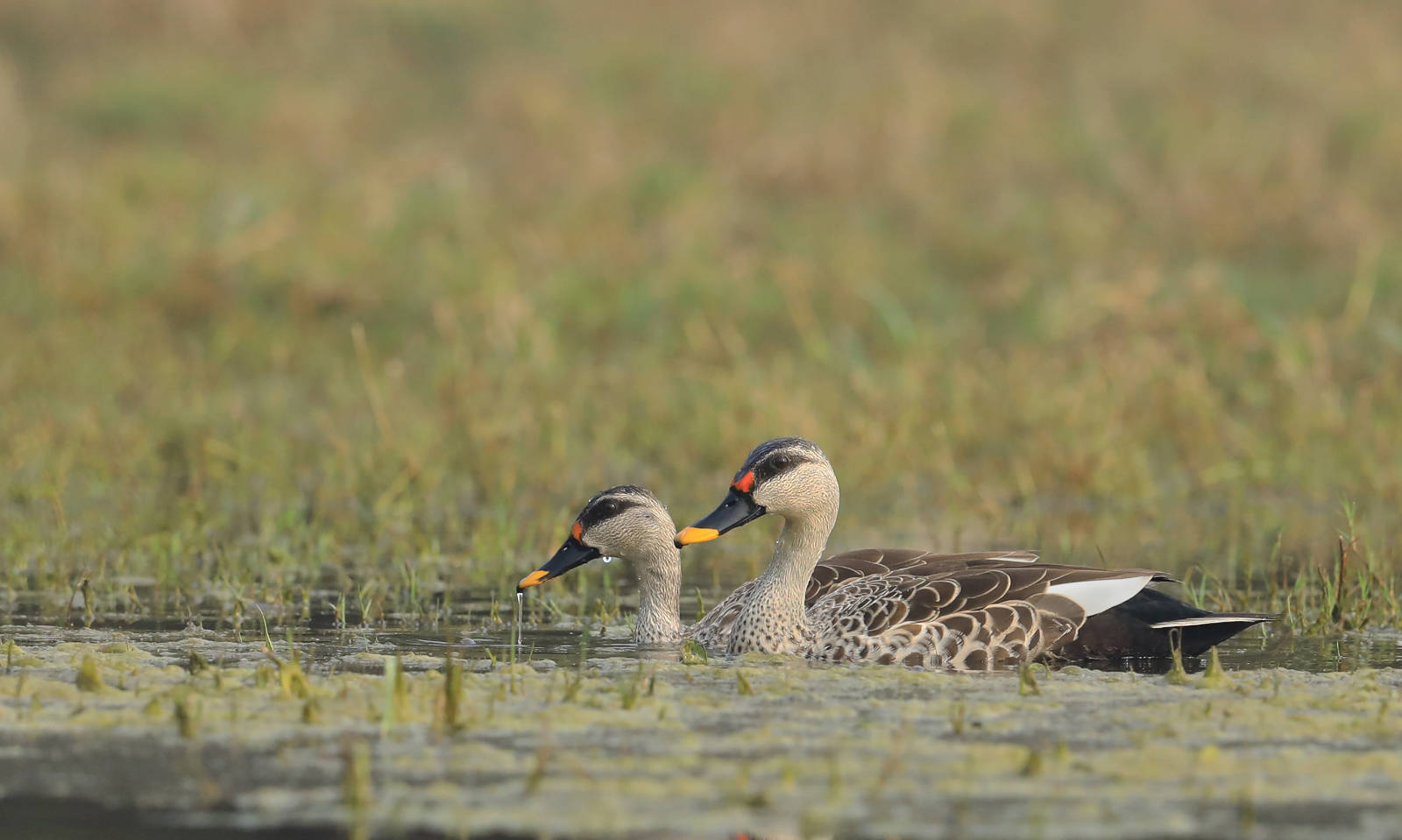Birding in Western Ghats Tour
Etched along the western coast of the Indian Subcontinent, The Western Ghats is one of the most breathtaking landscapes in the world. It’s a land gifted with undulating tropical forests, rolling tea estates and stunning shola forests. It is this diversity in the landscape and the ecology of the rainforest that has given rise to enthralling endemics that are on everyone’s wishlist. This wide-ranging tour is curated as a celebration to many of these remarkable beings: From The Malabar Whistling Thrush, the White-bellied Minivet, Nilgiri Laughingthrush, Nilgiri Wood Pigeon, the Sri Lanka Frogmouth to the exquisite Malabar Trogon, the Indian Pitta and the Great Hornbill.
- Dive into a plethora of bird diversity with over 400 species of birds to watch out for.
- Look out for enthralling endemics such as Malabar Whisteling Thrush, White Bellied Tree Pie, and the Nilgiri Laughing Thrush.
- Get a chance to witness some of the native nocturnal species such as the Ceylon Bay Owl and Great Eared Nightjars.
- Immerse yourself in the awe inspiring rainforests bound to mesmerize, across the undulating landscape.
- Capture these phenomenal species through your lenses with a some of the most jaw dropping backgrounds nature has to offer.
Day 1 : Arrive New Delhi (By flight)
On arrival at the New Delhi airport, you will be received by our representative who will transfer you to your hotel and assist you with the check in procedure. He will also handover and brief you on all travel related documents. Overnight stay is at the hotel.
Day 2 : New Delhi – Bangaluru – Mysore(flight + 143 kms/3 Hrs drive)
After breakfast, transfer to the airport to board a flight to Benguluru. On arrival, meet our representative at the airport and depart for Mysore. On arrival, settle at your hotel. Post lunch, leave for Ranganathittu Bird Sanctuary (40 mins drive) for an evening birding session on the Cauvery river via boat.
Ranganathittu is an exciting and unique destination where we have a great chance to witness a plethora of water fowl species such as Pelicans, Painted storks, Black headed Ibis, Thick Knees and others. The boat ride one takes is through rocky outcrops, tree covered banks and teeming mudflats. The bird diversity here is quite special and possibly one of a kind, when it comes to the tour. After a two hour boat ride, we return to Mysore for the night.
Day 3 : Mysore – Masinagudi (97 kms/2 hrs drive)
In the morning, we enage in a birding trail along the Chamundi Canal followed by breakfast. This is a short walk that follows the irrigation canal at the edge of Mysore town (20 mins drive from Hotel). Here, we seek the elusive Indian Eagle Owl and Brown Fish Owl that roost along the canal walls. Apart from them one has the chance to observe Baya Weavers, Small Minivets, White-Rumped Munias, Swallows, Martins and a variety of other scrub habitat species. If you’re lucky, you may come across tracks and signs of the urban leopards that roam the periphery of Mysore. After breakfast, depart for Masinagudi, located at the periphery of Mudumalai Tiger Reserve. This is a small forested area on the Sigur plateau, located at an altitude of 1000 m. The habitat, situated in the Nilgiri foothills, is a mix of montane forests, tall bamboo patches and dry scrubland. The drive to this destination is close to 2 hrs and cuts through the forests of Bandipur Tiger Reserve. There will be pelnty stops for birding along the drive . We will reach the lodge at Masinagudi by lunchtime. Once settled, we can head out for a walk around the area in search of the Nilgiri foothill specials like the spot-bellied eagle owls, grey-headed bulbuls, yellow-browed bulbuls, owlets , scops owls, blue-bearded bee eaters, red spurfowl, nightjars and many other interesting species that dot this enchanting landscape. Dinner and overnight stay at Masinagudi.Day 4 : Masina gudi – Kotagiri (57 kms/1-2 Hrs drive)
In the morning, we will head into the scrub forests around the Moyar gorge area, seeking habitat specialties like the blue-faced and sirkheer malkohas and our primary focus, the white bellied minivets. This habitat is also provides ample opportunities to spot bay-backed shrikes and some dry land Aquila raptors.
We return for breakfast at the lodge and check out soon after. From here we drive up hill with a packed lunch into the heart of the Nilgiris, birding at some key spots along the way. ( 2 hrs plus birding and lunch time).
The Botanical Gardens at Ooty and Sims park at Coonoor are key birding hotspots that we will stop at as we search for the super rare Kashmir flycatcher, Nilgiri flycatcher, black and orange flycatcher, crested goshawk and the Nilgiri wood pigeon.
In the afternoon, we reach our lodge in Kotagiri for some well deserved rest.
Kotagiri is a small tea town located amongst large tea plantations and remnant shola and degraded forest areas. The altitude here is roughly 1600 m above sea level and the bird diversity in this area is quite fascinating. The area also boasts a good population of Indian gaur, leopards and sloth bears, all of who thrive amidst the tea undergrowth.
Rest of day at leisure. Night at Kotagiri.
Day 5 and 6 : Kotagiri
A full day of birding around Kotagiri region. We visit a small shola patch at dawn seeking Nilgiri endemics such as the Nilgiri Sholakili, Nilgiri Chilleppen and the Nilgiri thrush. Chances of coming across vagrants like the Blue and White flycatcher and Pied Thrush are also a possibility on this trail.
We return from the shola patch for breakfast and then head back out again, this time to a tea estate along the fringe area. The hedgerow and meadow habitat of this area is one of the best places to look for red avadavats and the vociferous Malabar lark. There is also a small population of Indian Eagle Owls that reside here.
We return to the lodge for some rest and refreshments. Post lunch, we head out to the lower Kotagiri area to look for soaring raptors and the magnificent Great Hornbills, though the Black Eagles are our top priority for the day. There is also a small grove in the area frequented by Crested Tree swifts, Vernal Hanging Parrots and also, occasionally, the large hawk cuckoo.
Evening we return to the lodge at sundown. Night at Kotagiri.
Then, the next day, we head out for another birding session in the morning, as we repeat some of the previously visited areas to check for birds that may have missed out on. Depending on interests, a spot plan can also be made for specific birds in the morning.
After lunch, we drive for about 1 hr 30 mins to the edge of a cliff, the home of Shaheen Falcons. There are a couple of these fast flying raptors using the cliff for refuge. Our vantage point should give us the best view of them. We reach here in the afternoon to ensure the light is behind us and the visibility in our favour.
Return to the lodge for dinner and rest.
In Kotagiri, there are many birding hides set up specifically for photographers. These can be utilized if the guests are keen on photography.
Overnight at the lodge in Kotagiri.
Day 7 : Kotagiri – Pollachi (131 kms/3 Hrs drive)
After another short morning birding session(optional), we shall check out from the lodge and drive towards the plains and further south towards the agricultural town of Pollachi. ( 3 hrs) Pollachi is located at the heart of the Palghat gap in the Western Ghats with the Nilgiris to its north and the Anamalais range to the south.
This will be our base for the next two days.
On arrival, we proceed for lunch and settle in. In the evening, our excursions take us to the foothills of the Anamalais as we extend the walk into a drive at night in search of forest and grassland species. This may include a wide variety of birds from Orange minivets, Malabar Trogon, munias to the Brown Fish and Mottled Wood Owls. This short stretch of walking and driving, has proved to be very productive for birding in the past.
Overnight stay at Pollachi.
Day 8 : Pollachi
Post Breakfast, we shall be out for the day at the tea town of Valparai. Nestled inside Anamalai Tiger Reserve, Valparai and its surrounding forests are one of the last strongholds of the endemic lion-tailed macaque. The tall forests also support a variety of species like Nilgiri Martens, Dholes, Flying Squirrels and the endemic Brown Mongoose along with the Jerdon’s palm civet.
In terms of birding, the valparai area is particularly interesting for those seeking the Wayanad Laughingthrush, Hill swallow, Legge’s Hawk-eagle, Rufous-Bellied Eagle and the rare Yellow-Throated Bulbul.
The day out here will comprise of a mix between driving and walking which includes roadside wildlife viewing and birding halts. Packed lunch will be carried to ensure we’re well satiated. If we’re lucky, we could well encounter herds of Nilgiri Tahr, the endemic mountain goat of the Western Ghats, on the roadside rocky cliffs, either on the way up to Valparai or while returning.
Overnight stay at Pollachi.
Day 9 : Pollachi – Munnar (114 Kms/3 Hrs drive)
Early morning, we will check out from the lodge and drive 1.5 hrs to Chinnar WLS, a small sanctuary located on the border of the state of Kerala and Tamil Nadu. We stop here to enjoy breakfast and take a short walk along a stream as we search for or the endemic Grizzled Giant Squirrel. The stream area in the past has also produced some exciting encounters with large owls and the rare yellow-throated bulbul.
After our walk, we drive another two hours towards the hill town of Munnar, located in the Anamalai hills. The separation created by the Palghat gap has led to geological separation of populations and thus lead to the emergence of new bird species here.
On arrival, we proceed lunch and settle into our rooms, located in the midst of a beautiful cardamom plantation.
In the evening, we take a trail through the estates, to familiarize ourselves with the local birdlife and the ways of the cardamom planters.
Overnight stay at Munnar.
Day 10 : Munnar
This morning is fairly relaxed with a a short excursion around the lodge followed by breakfast. We leave late morning with our packed lunch and tea to the Top Station area and Pambadum Shola National Park, one of the well protected pristine shola forests in the region. This area is well known for its Nilgiri Martin sightings. The drive to this area takes one about 1.5 hrs and crosses large lakes and pastures, and holds a great view of small population of high altitude elephants that have managed to thrive around Munnar town.
The shola forests are home to many interesting bird species like Scimitar and Dark Fronted Babblers, Square Tailed Bulbuls, Bluebirds, Nilgiri Wood Pigeons and Mountain Imperial Pigeons.
We return to the lodge in the evening. Overnight stay at Munnar.
Day 11 : Munnar – Thattekad (65 kms/1-2 hrs drive)
Early morning, we head to Rajamalai, the high peak located within the Eravikulam National Park. We access the area via non-polluting electrical vehicles keeping in mind the ecological sensitivity of the area. The grasslands, shola forests and the dense thickets of this hillside provide refuge for many interesting high altitude endemics. The trails are abundant with Nilgiri Tahr on either side, as we seek the White-Bellied Sholakillis, Painted Bush Quails, Palni Chilleppen, Nilgiri pipits and the prized catch, the Broad-Tailed Grassbird. We leave early for this excursion to ensure that we avoid the crowd. After a a satiable picnic breakfast, we carry on with our birding till late morning and then, return to the lodge.
Once we’re back, there’s time to freshen up and followed by checkout. We drive downhill, further into kerala, along the windward side of the mountains, as it takes us 1.5 hrs to reach the birding mecca of south India known as Thattekaad. On arrival, we check in, followed by lunch.
Day 12 : Thattekad Bird Sanctuary
The Salim Ali Bird Sanctuary or the Thattekaad bird Sanctuary is located on the banks of the Periyar River amongst rubber groves and forests. Thattekaad is the only low land evergreen forest of India and is one of the best birding hotspots of the country. The 25 sq.km sanctuary supports over 300 species of birds, a good number of which are encountered only in the vicinity of this forest patch. The dense foliage, the thick undergrowth and the tall trees can make the viewing experience a bit challenginf in these forests but the local guides are skilled and adept at spotting to ensure that you have a fantastic wilderness experience in Thattekaad.
Birding highlights here include diurnal species and also avian specialities of the night. Our wishlist include the Sri Lankan Frogmouth, the bird that put thattekaad and the local bird guides on the map, the Srilankan Bay Owl, White-Bellied Tree Pie, Slaty Legged Crake, Great Eared Nightjar, Jerdon’s Nightjar, Southern Hill Mynas, Mottled Wood Owl, Flame Throated Bulbul, Oriental Dwarf Kingifisher and the Blue Eared Kingfisher. The watchlist aslo features migratory specials like the Black Baza, Square Tailed Drongo Cuckoo, Rusty Tailed Flycatchers and the Blue-Throated Blue Flycatcher are also often seen here. The loud drumming of the White-Bellied Woodpecker and the Rufous Woodpecker is omnipresent in these forests but seeking them can be challenging. The less vocal but mesmerising Heart Spotted Woodpecker is also a bird that requires a keen eye and a lot of patience.
At dusk, the Great-Eared Nightjars fly out of their roosts and their large raptor like wings and their slow steady wingbeat make for quite the visual treat. The Jerdon’s Nightjars are also seen in the same spot. Once darkness sets in, the guide will search for the Slender Loris, a small old-world insectivorous primate that becomes active at night. The walk to look for the loris is also a great way to look for the endemic Ceylon Bay Owl, Oriental Scops Owl, Hawk Owls and Nightjars.
Overnight stay in Thattekad.
Day 13 : Thattekad – Kochi (65 kms/1-2 hrs drive)
After Breakfast, check out and depart for Kochi (1.5 to 2 hrs) to board a flight back home or to any onward destination.
Contact customer care for pricing at info@tigerjourney.in or give a call on +91 9630507774
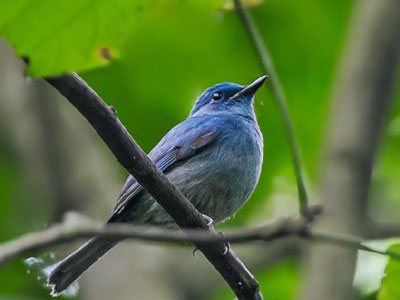
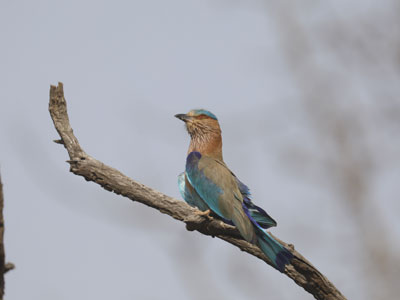
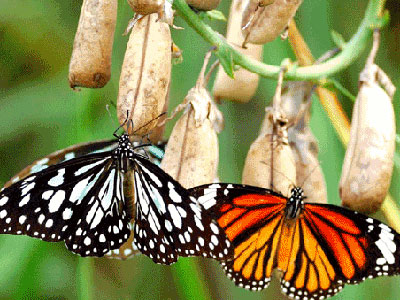
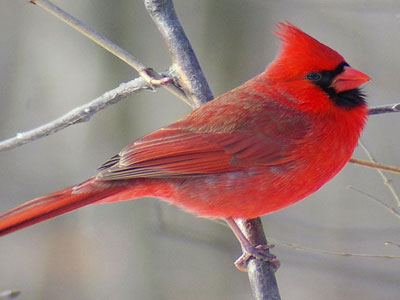
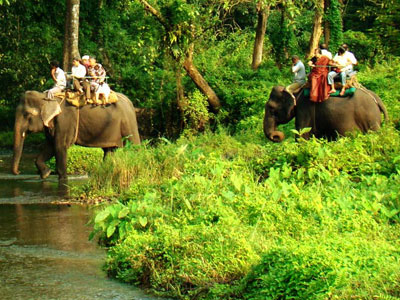
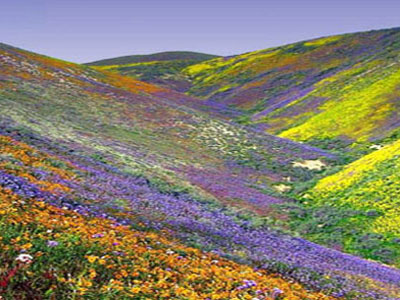
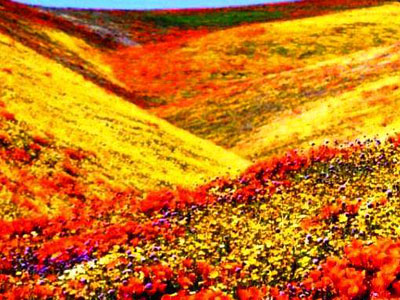
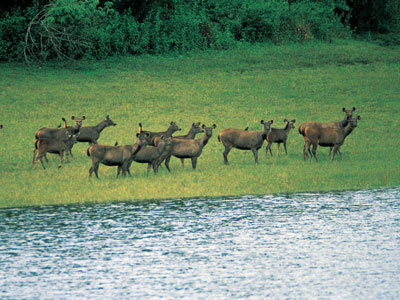
Important Notes
- Bandhavgarh, Pench & Kanha National Parks are closed for afternoon safaris on Wednesdays.
- Tiger Journey reserves the right to change the hotels, lodges to similar category in case of no availability.
- Tiger Journey reserves the right to reroute the itinerary in case of non-availability of Flight/ Train tickets or other reasons of similar nature.
- Park fees may change without prior notice. This is beyond our control and any increase levied will be passed onto you.
- There are limited safari vehicles allowed to enter in the national parks and are most difficult to book at a short notice. Please book your tour much in advance.
- The published price is not applicable during the Christmas and the New Year period.
- Check-in and check-out time at all hotels is 12 noon unless otherwise specified.
Tours
National Parks
Explore

Post - Tala, Bandhavgarh National Park, District - Umaria, Madhya Pradesh, Pin code - 484664
+91 9630507774, +91 9340711175Email : info@tigerjourney.in
© 2020 All Rights Reserved

